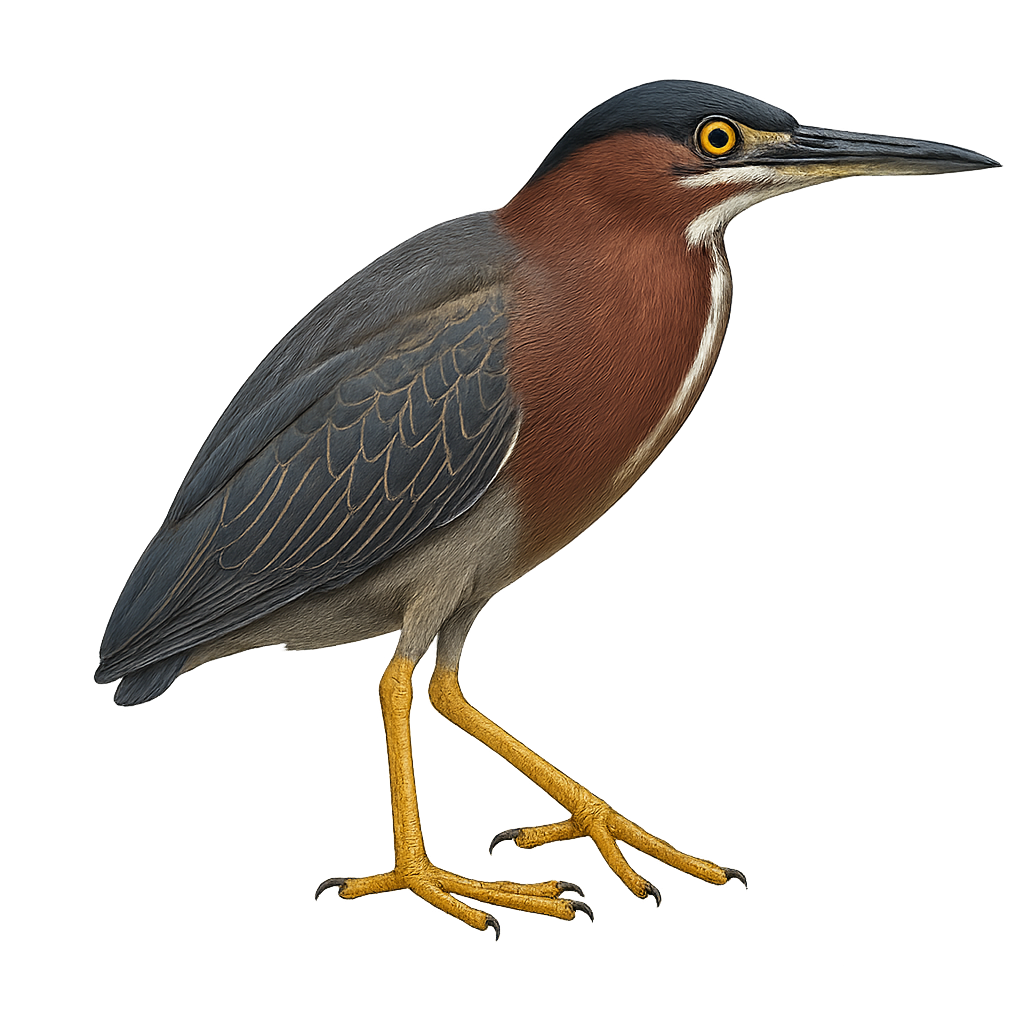Your wildlife photography guide.
Explore the green heron in detail, study its behavior, prepare your shots.
Where to observe and photograph the green heron in the wild
Learn where and when to spot the green heron in the wild, how to identify the species based on distinctive features, and what natural environments it inhabits. The WildlifePhotographer app offers tailored photography tips that reflect the green heron’s behavior, helping you capture better wildlife images. Explore the full species profile for key information including description, habitat, active periods, and approach techniques.
Green Heron
Scientific name: Butorides virescens

IUCN Status: Least Concern
Family: ARDEIDAE
Group: Birds
Sensitivity to human approach: Suspicious
Minimum approach distance: 10 m
Courtship display: April to May
Incubation: 19-21 jours
Hatchings: April to June
Habitat:
Marshes, rivers, lakes, mangroves
Activity period :
Active at dawn and dusk, ideal moments for observation.
Identification and description:
The Green Heron, Butorides virescens, is a small heron with dark green plumage and bluish-gray wings. It is characterized by its dark head and long, pointed bill. This heron is often found in wetlands, marshes, and along the shores of water bodies in North and Central America. Known for its clever hunting technique, it uses bait to lure fish. The Green Heron is a solitary bird but can be seen in small groups during migration. It is generally discreet and blends well into its environment. Its breeding season extends from spring to summer, where it builds its nest in trees or shrubs near water.
Recommended lens:
400mm – adjust based on distance, desired framing (portrait or habitat), and approach conditions.
Photography tips:
To photograph the Green Heron, choose early morning or late afternoon hours when the light is soft and the bird is active. Use a 400mm lens or longer to capture details without disturbing the bird. Maintain a distance of at least 10 m to avoid scaring it. Be patient and discreet, as the Green Heron is suspicious. A tripod can be helpful to stabilize your camera, especially in low light conditions.
The WildlifePhotographer App is coming soon!
Be the first to explore the best nature spots, track rutting seasons, log your observations, and observe more wildlife.
Already 1 430 wildlife lovers subscribed worldwide

